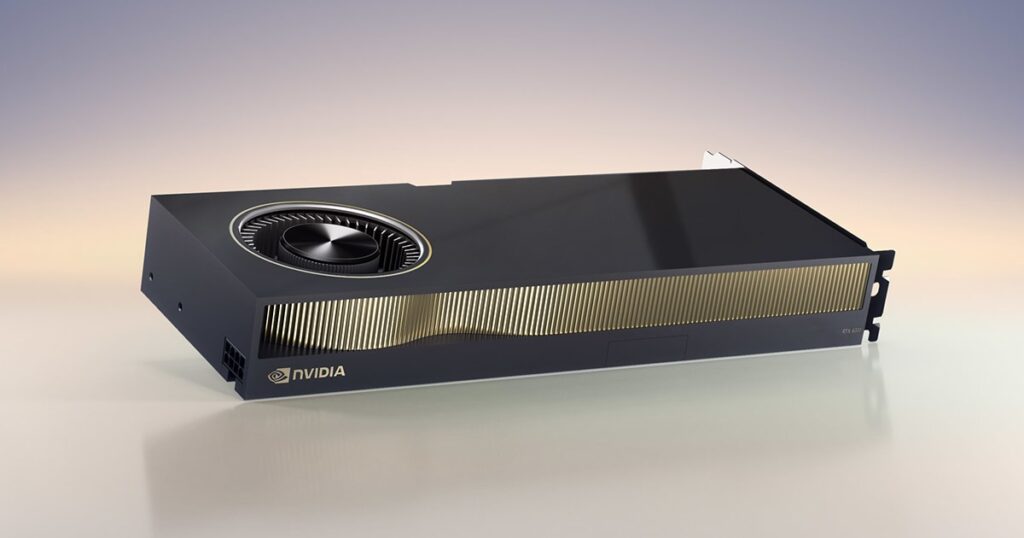AMD has just fired a major shot in the battle for AI and workstation dominance. The Radeon Pro W7900, a professional-grade GPU with 48GB of GDDR6 memory, is showing that NVIDIA’s popular 24GB GPUs, like the RTX 4090, may not be enough for heavy AI workloads. Benchmarks indicate that in AI inferencing tasks, the W7900 outperforms the RTX 4090 by a staggering margin. Could this mark a shift in the market, or is NVIDIA still holding the upper hand?

Release Dates
- Radeon Pro W7900 was announced on April 13, 2023, and became available in Q2 2023.
- NVIDIA RTX A6000 was announced in October 2020 and launched in early 2021.
AI Benchmark Results – AMD Takes the Lead
Recent tests using DeepSeek R1 with LM Studio 0.3.12 and Llama.cpp runtime 1.18 reveal some eye-opening performance numbers. Here’s how AMD’s W7900 compares to NVIDIA’s GPUs in AI workloads:
| Model | RTX 4090 | Radeon Pro W7800 | Radeon Pro W7900 |
|---|---|---|---|
| Distill Qwen 32B (8-bit) | 2.7 tokens/sec | 19.1 tokens/sec | 19.8 tokens/sec |
| Distill Llama 70B (4-bit) | 2.3 tokens/sec | 12.8 tokens/sec | 12.7 tokens/sec |
The results are staggering—AMD’s W7900 is up to 7.3x faster than NVIDIA’s RTX 4090 in these AI tasks. The key reason? VRAM capacity.
More VRAM, More Power
The Radeon Pro W7900’s 48GB VRAM gives it a major edge in AI, large language models (LLMs), and professional workloads. AI models demand high memory bandwidth, and while the RTX 4090 maxes out at 24GB, the W7900 doubles that. This means smoother inferencing, faster model processing, and better handling of massive datasets.
Even the Radeon Pro W7800, with 32GB VRAM, shows massive gains over the 4090, proving that NVIDIA’s 24GB GPUs might be hitting a memory wall in demanding AI applications.
RDNA 3
The Radeon Pro W7900 is based on AMD’s RDNA 3 architecture, which brings several important upgrades:
- Chiplet Design – A more scalable and power-efficient approach to GPUs.
- AI Acceleration – Specialized cores optimized for AI and machine learning tasks.
- Second-Gen Ray Tracing – Better performance in professional rendering.
- Infinity Cache – Improves memory access speed, reducing bottlenecks.

How Does It Compare to the RTX A6000?
While the RTX 4090 is often used for AI, it’s technically a gaming card. The real NVIDIA competitor for the W7900 is the RTX A6000, which also features 48GB VRAM but at a much higher price:
- Radeon Pro W7900: $3,500
- RTX A6000: $4,650 – $5,000
AMD is offering similar (if not better) AI performance for at least $1,000 less. For AI researchers, machine learning engineers, and professionals handling large datasets, this could be a major factor in GPU selection.
Is This a Threat to NVIDIA’s AI Dominance?
NVIDIA has long been the go-to brand for AI workloads, but the Radeon Pro W7900’s performance and pricing make it a serious competitor. With twice the VRAM of the RTX 4090, strong AI acceleration, and a more affordable price tag, AMD is showing that it’s ready to challenge NVIDIA in the professional GPU space.
The big question: Will NVIDIA respond with a more affordable high-VRAM solution, or will AMD start gaining market share in AI and workstation applications? One thing is clear—the competition in the high-end GPU market is getting more intense, and that’s good news for consumers.
Sources
- Tom’s Hardware: AMD RDNA 3 Professional GPUs vs NVIDIA
- LM Studio: Latest AI Performance Benchmarks
- AMD Official Website: Radeon Pro W7900 Specifications
- NVIDIA Official Website: RTX A6000 Specifications
Bu konu hakkında bilgi vermeniz çok güzel. Genellikle türkçe içerikler az oluyor fakat böyle güzel içerikler görmek ve okumak çok zevkli.
Gerçekten detaylı ve güzel anlatım olmuş, Elinize sağlık hocam.
I just like the helpful information you provide in your articles